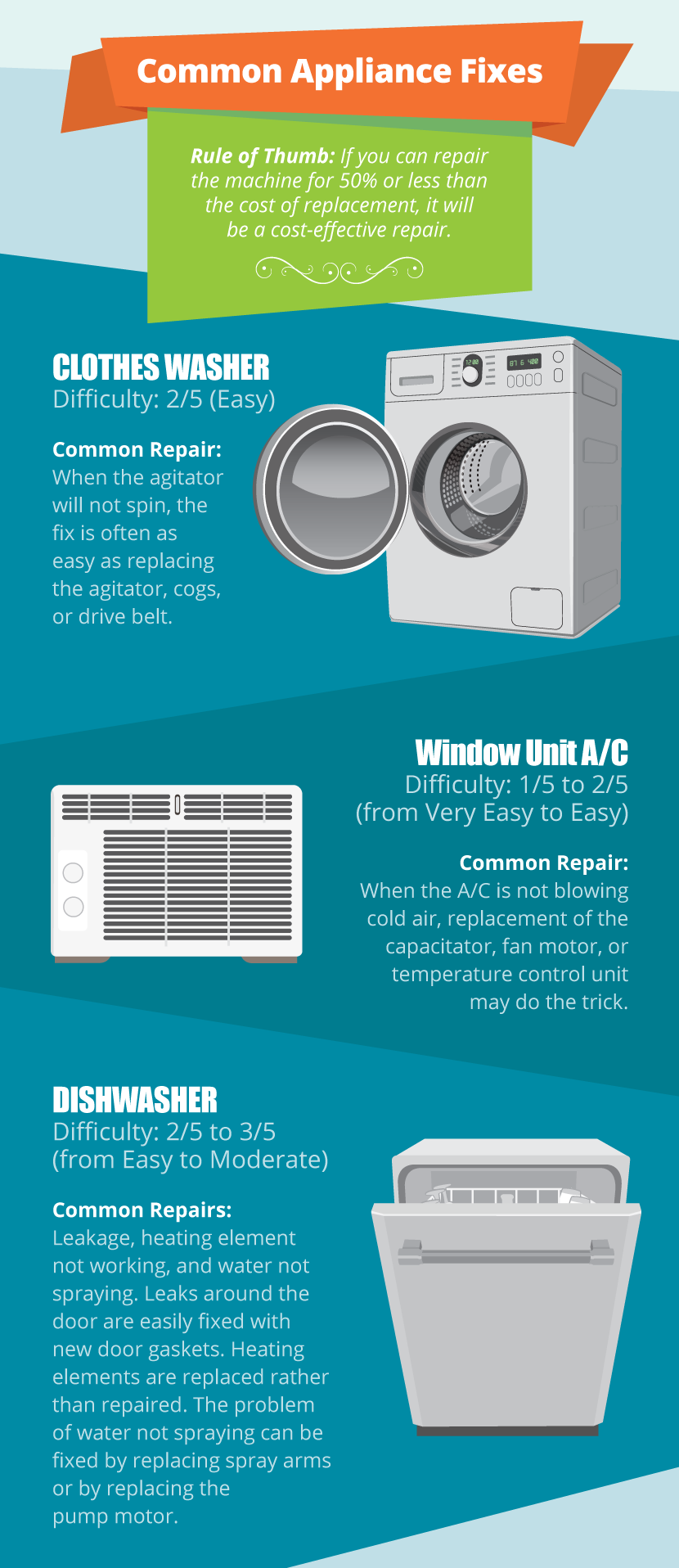
Are you still tossing out machines rather than repairing them? Can you be forgiven for hanging onto the outdated notion that nonfunctioning machines and household appliances must be tossed and replaced?
The concept of throwaway culture belongs in the waste bin of history. No longer is it necessary to toss out every washer, A/C, vacuum, fridge, and other household appliance and electronic device. This guide is designed to help you decide whether to repair, discard, or replace those broken machines in your life, and which avenues to pursue when you make those choices.
Our Disposable Society
It is easy to blame the people of the last century for creating, pushing, and propagandizing throwaway culture. Before that time, repair shops abounded in all cities and people had the skills to repair small appliances. It didn’t hurt that machines were more basic and easier to fix in those simpler times. The use-and-toss ethos reached its apex in 1955 with the Life magazine article “Throwaway Living,” which cheerfully promoted “disposable items that cut down household chores.”1 After the ecological movement of the 1970s and the later awareness of climate change, consumers began to look askance at throwaway culture. But with the new millennium and its rise of cheap products from overseas, we have seen a resurgence in throwaway culture. Millennials are not especially keen on throwing everything away, but technology improves so rapidly that tossing and replacing can make more sense than fixing. Waste electrical and electronic equipment (WEEE) or e-waste is a solid waste category that comprises a range of electronic items, from large household appliances such as refrigerators and air conditioners to more sophisticated devices like stereos and flat-screen TVs – all of which have been discarded by their users. From 1999 to 2015, the rate of WEEE or e-waste recycling has increased from about 15 percent to 21 percent. While this number may sound encouraging, understand the overall context: the total amount of waste has increased disproportionately and astronomically. In 1999, the total amount of estimated e-waste produced was 1,056,000 tonnes; in 2015, the total amount was 3,562,000 tonnes.2 By sending WEEE to landfills, we are polluting our environment. Television and computer monitors normally contain hazardous materials such as lead, mercury, and cadmium. Any item that has circuit boards contains nickel, beryllium, and zinc. If you think this applies only to computers, remember that more and more “dumb” appliances such as fridges and washers are becoming “smarter” with the addition of computer brains and Wi-Fi connections.3When to Fix it
The choice to repair an item has less to do with aptitude than with your inclination for repairing things. If you do not mind getting your hands dirty, you just might be able to repair that washer or A/C for pennies on the dollar. The Internet is bursting with repair advice for small machines and appliances. Similarly, online sites sell repair parts, down to the tiniest $0.49 screw – a supply chain that consumers could not access before the Internet. The rule of thumb is that if you can repair the machine for 50 percent or less than the cost of replacement, go ahead and do so. Repairing it yourself with parts you purchase online will increase that 50 percent buffer and make the repairs more cost-effective.41. Clothes Washer
Clothes washers are used more than almost any other appliance. And they work hard. A 4.2-cubic-foot washer contains about 3 cubic feet of water and wet clothing, a load approaching 200 pounds. These heavy loads eventually affect the washer’s ability to agitate the clothing.- Repair Difficulty Rating: 2/5 (Easy)
- Solutions: When the agitator will not spin, the fix is often as easy as replacing the agitator, cogs, or drive belt.
2. Window A/C Unit
Air conditioners can seem intimidating, but they have far fewer moving parts than you might think.- Repair Difficulty Rating: 1/5 to 2/5 (from Very Easy to Easy)
- Solutions: When the A/C is not blowing cold air, replacement of the capacitator, fan motor, or temperature control unit may do the trick. Again, the names of these parts are misleading; DIYers who have replaced them report that repairs are very easy and take less than thirty minutes to complete.
3. Dishwasher
Extreme heat and constant moisture take their toll on dishwashers.- Repair Difficulty Rating: 2/5 to 3/5 (from Easy to Moderate)
- Solutions: Leakage, heating element not working, and water not spraying. Leaks around the door are easily fixed with new door gaskets. Heating elements are replaced rather than repaired. The problem of water not spraying can be cured by replacing spray arms or the pump motor.5


